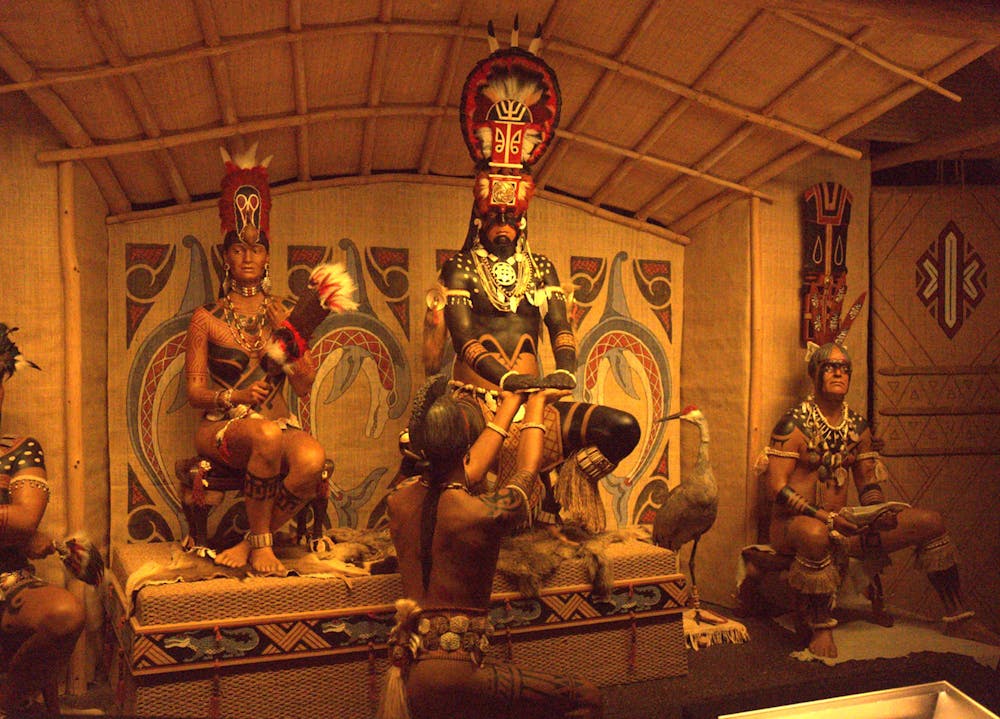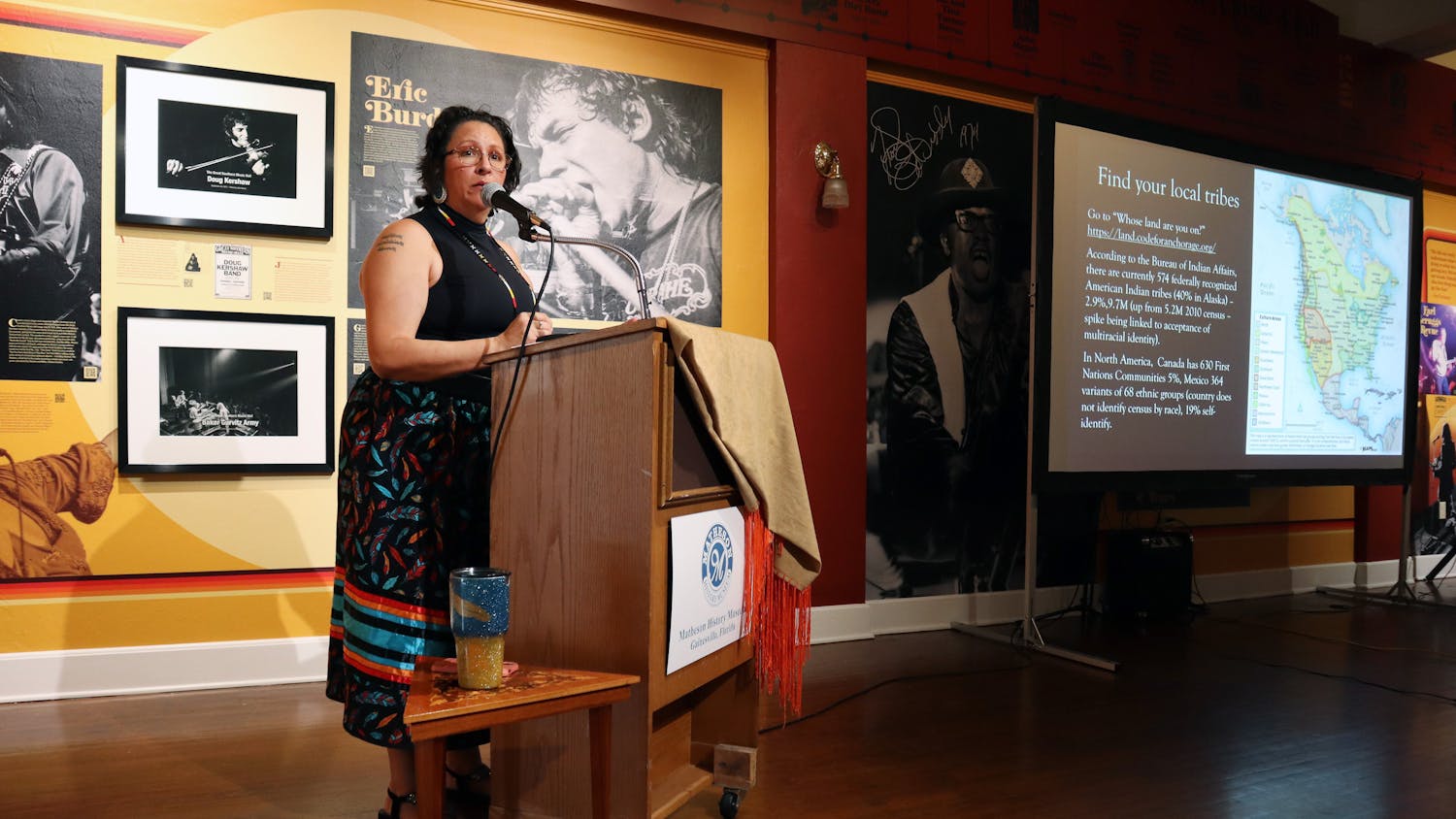Cassie Urbenz, a 22-year-old UF MFA visual communications student and descendant of the Mi'kmaq tribe, has visited the Florida Museum a few times since coming to UF. When they learned the museum holds thousands of Native American remains, they were mortified they hadn’t known sooner.
“I just can’t imagine being a Seminole-descended student and not knowing that somebody who I potentially have ancestral relations to is in a hall across from my dorm,” Urbenz said.
The Florida Museum’s collections hold at least 2,500 Native American ancestors — the 11th-largest collection of unrepatriated Native American remains in the United States — and sacred items in its Powell Hall exhibit.
The Native American Graves Protection and Repatriation Act of 1990 requires institutions receiving federal funds, like UF, to return ancestors and sacred objects to federally recognized tribes. The museum has recently reinforced its commitment to NAGPRA by resuming its initiative to return ancestral remains and planning renovations for a 20-year-old exhibit on indigenous history.
The museum has begun a multiphase project to redesign its “South Florida People and Environments” exhibit. Last month, the museum received a consultation documentation grant of $99,897 to examine items from three select counties in northeast Florida. After examination, any items or remains will be returned to the corresponding tribes.
The Florida Museum also secured a NAGPRA grant of $90,000 in 2021 from the National Park Service, which funded efforts to consult with tribal partners to determine where selected items from northwest Florida should be returned.
As Urbenz works on decolonizing themselves from Western narratives, they said they find it strange that the university has not fully complied with NAGPRA by returning all of the ancestral remains held at the museum.
Decolonization refers to the process of marginalized communities erasing the remnants of oppression by deconstructing social structures that perpetuate discriminatory ideals.
“I can’t say I was horribly surprised because I feel like UF would hold onto those items, but the fact that I [have visited] that hall is kind of terrifying,” Urbenz said.
In response to critiques on UF’s vast holding of ancestral remains, Catherine Smith, who is the Florida Museum’s NAGPRA coordinator, said the Florida Museum was established in 1917 largely to receive cultural heritage and archaeological material.
However, Smith is looking forward to assisting the university in its efforts to comply with NAGPRA.
“The intention with these returns is to acknowledge and honor indigenous peoples whose lives were radically changed, but also to honor the sovereignty of the tribal nations within the U.S. borders,” she said.
The Florida Museum welcomed Smith as its first full-time NAGPRA coordinator in July 2022. The NAGPRA coordinator serves as the liaison between the museum, tribal nations, state and federal agencies and the national NAGPRA program to facilitate repatriation.
Prior to Smith’s hiring, the university had returned several hundred ancestors taken from Citrus County in 2008. Data from the National Park Service reported that UF had also returned 12% of more than 3,000 associated funerary objects.
Smith said in the past, items and ancestral remains that were more difficult to connect to a descendant nation were placed on a list regarding them as culturally unidentifiable, which meant they had no culturally affiliated present-day tribe.
“Although that was not the legislative intent, it was a common interpretation among institutions to treat that list as, ‘We're telling you what we have, and you let us know when you're ready to discuss it,’” she said.
The Florida Museum is also making efforts to redefine its cultural perspective of displayed burial items through renovations to the museum’s “South Florida People & Environments” exhibit.
“A lot has changed in terms of science, and a lot has also changed in terms of indigenous history and how that is being communicated in a museum setting,” Florida Museum Director of Exhibits & Public Programs, Darcie MacMahon, said.
The 6,050-square-foot exhibit at Powell Hall opened to the public in 2002 and is the museum’s second permanent exhibit, with displays that highlight a South Florida estuary and the cultural traditions of Native Americans.
Having opened over 20 years ago, the exhibit has started to experience lighting and electrical system failures, which will also be addressed in the upcoming renovations.
MacMahon said the proposed renovations were developed with the help of the Seminoles, a tribe indigenous to Florida for thousands of years. The renovated exhibit will include a storyline for a film theater and interpretive signage and graphics.
The first phase of the project will be to renovate the infrastructure of the entryway, mangrove forest and the natural habitats gallery, MacMahon said. She will receive notice next summer on the status of a grant proposal submitted to the state that will be used to upgrade the first few galleries.
MacMahon added that the museum will also work with the Seminoles on the next phase of planning for the rest of the exhibit hall.
“The building and continuing relationship with Native people in Florida is really important to the museum and is actually a lot of fun,” MacMahon said. “We really enjoy stretching our imaginations and coming to the table with people who might look at the world differently.”
The Tribal Historic Preservation Officer and Director of the Seminole Tribe of Florida, Tina Osceola, said the nation is appreciative of UF’s demonstrated commitment to include the Seminole voice in the exhibition’s redesign.
“It is the Seminole Tribe of Florida’s hope that we continue to enjoy a relationship based on respect and inclusion of the Seminole voice at both the policy and practice levels of the University of Florida,” Osceola said.
Seminole Tribal members, many of whom have passed, contributed to the design and voice of the original exhibit, and their descendants have been asked for their cultural perspectives, Osceola said.
Osceola could not comment on the tribe’s work with UF under NAGPRA.
“The Seminole Tribe of Florida is not currently discussing plans for the return of our ancestors [as] the topic is highly sensitive and is a sacred topic,” Osceola said.
Contact Jinelle Vazquez at jvazquez@alligator.org. Follow them on Twitter @vazquezjinelle.
Jinelle Vazquez is a senior at UF pursuing a major in Public Health with a minor in Indigenous Studies. They currently report for the enterprise desk covering health. In their free time, they enjoy hiking, photography and making art.






